to remove dust and detritus. If you find green algae building up on
them, it can be safely removed by cleaning . Use of a pressure washer
should be limited to very dirty pavements and no more than once a
year, as the high-power water jet loosens jointing and can damage
some pavings.

| This is the simpler of the herringbone patterns to set up. Decide on a "base-line" that will be the start of the pattern. This is usually taken to be a line along the main directriopn of travel or one that is parallel or at right angles to the house or other building. If there is a right-angle corner, the setting out can be based on the two lines , as shown in the diagram below. Setting out a perpendicular, ie a line at exactly 90° to the base line, is described on the setting-out page. 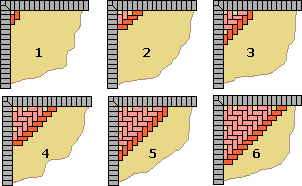 | |
| On a square or rectangular area, a 90° herringbone pattern can be used to keep cutting to a minimum. Only one block width in 4 need be cut to fit, and judicious positioning of edge courses can ensure that the pavement is a given number of full bricks wide. It is best to start laying tight against a fixed edge, such as against an edging course, but if this is not possible, then a taut string line can be established as the base-line. | |
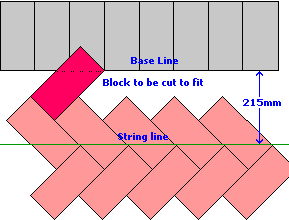
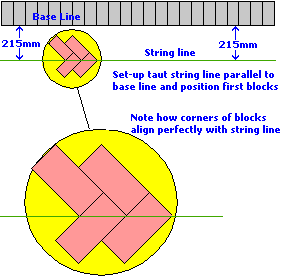


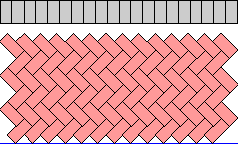
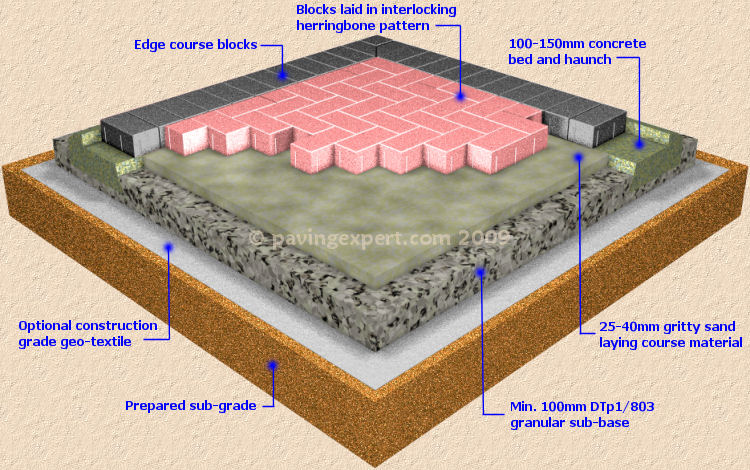
No comments:
Post a Comment